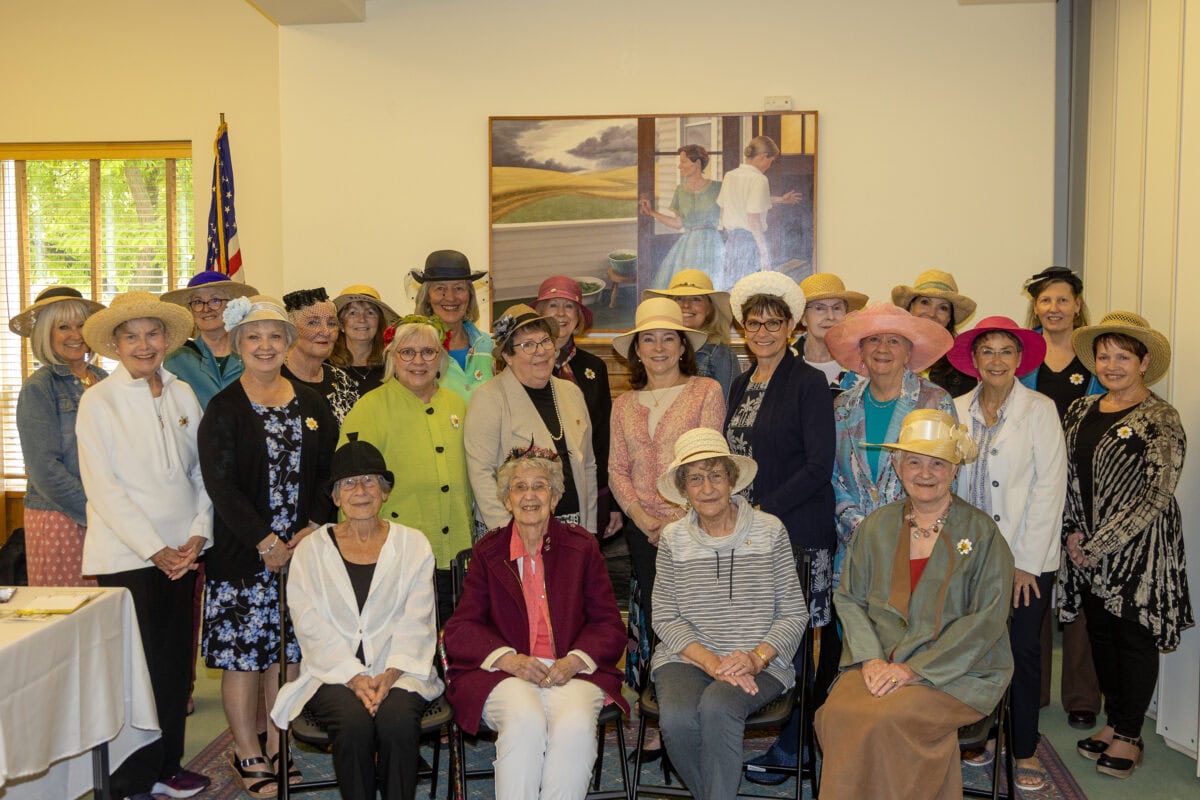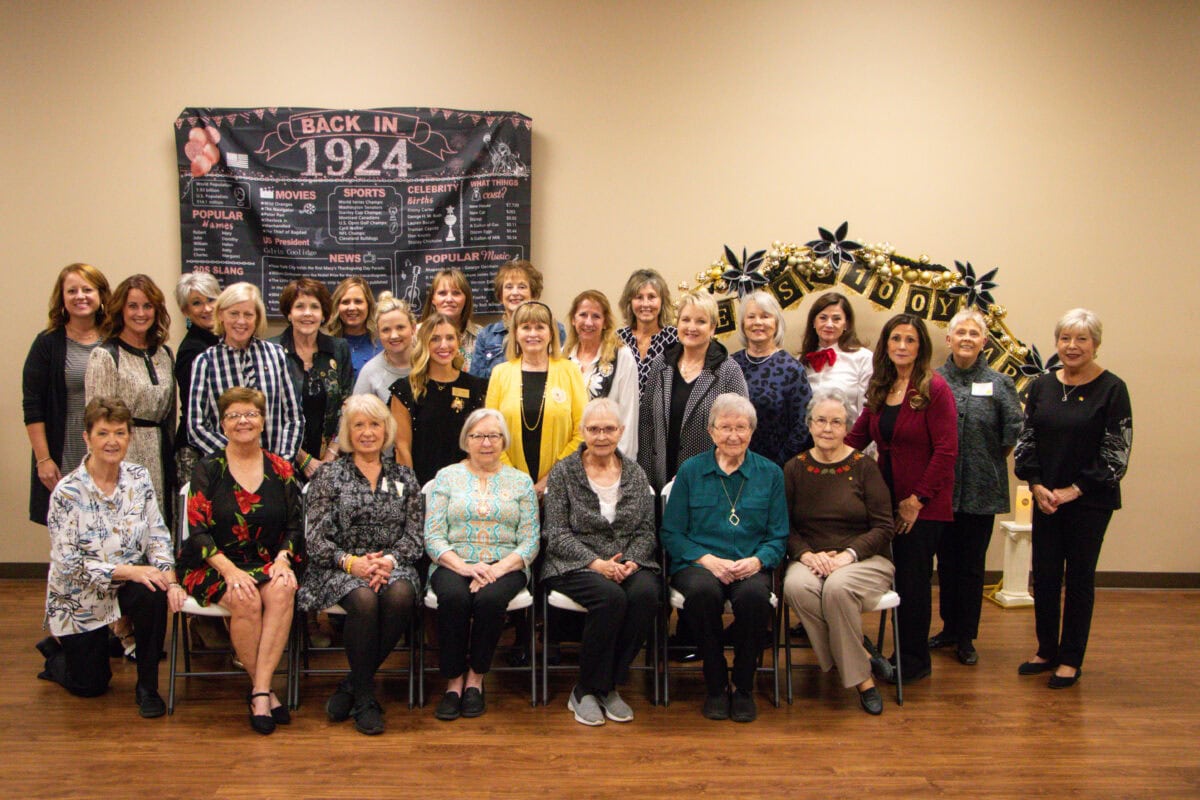To be included on the Authors page, your book must have been published within the last year. Send the author’s name; their chapter letter(s), city, state/province/district; the title of the book; a brief, objective synopsis of the book and a photo of the cover of the book or of the author to: editor@peodsm.org Authors are published in the order in which they are received and new authors are added in conjunction with the release of new issues of The Record.
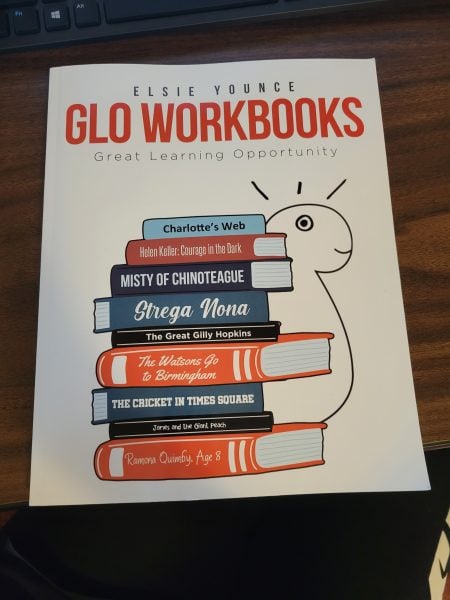
Elsie Younce, EP, Albany, Oregon, wrote “Glo Workbooks: Great Learning Opportunity,” a workbook designed for young readers to engage in enriching activities surrounding literature and interact with their favorite stories. The workbook features several novels, some of which have won Newberry and Caldecott Awards. From comprehension questions, vocabulary research, writing stories, bookmaking, craft projects and puzzles and much more, “GLO Workbooks” will allow readers to expand their reading and critical thinking skills in the world of literature. “GLO Workbooks” is perfect for parents, educators, tutors, book clubs for young readers and literature lovers.
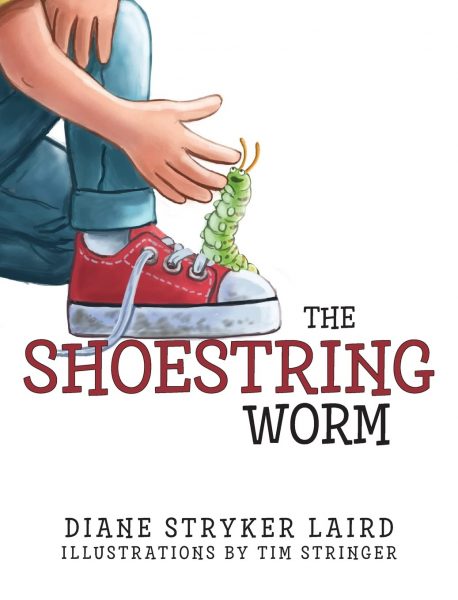 Diane Laird, E, Charlotte, North Carolina, wrote “The Shoestring Worm.” When you’re just two inches tall, it can be hard to stand out from the crowd. And for poor little Herm the Plain-Banded Carrot Worm, life can sometimes feel a laittle, well, plain. That is until, with the help of an unlikely friend, he finds his wiggle and discovers his true purpose. This sweet and squiggly little tale will have readers of all ages smiling as they learn about friendship, kindness, and finding one’s place in a big, big world.
Diane Laird, E, Charlotte, North Carolina, wrote “The Shoestring Worm.” When you’re just two inches tall, it can be hard to stand out from the crowd. And for poor little Herm the Plain-Banded Carrot Worm, life can sometimes feel a laittle, well, plain. That is until, with the help of an unlikely friend, he finds his wiggle and discovers his true purpose. This sweet and squiggly little tale will have readers of all ages smiling as they learn about friendship, kindness, and finding one’s place in a big, big world.
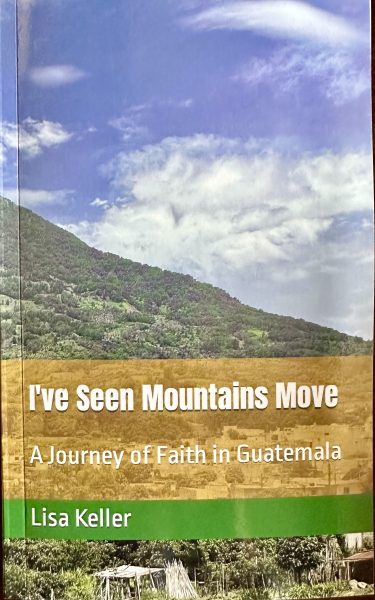
Lisa Keller, W, Punxsutawney, Pennsylvania, wrote “I’ve Seen Mountains Move: A Journey of Faith in Guatemala.”In June 2007, Lisa, Rod, and their young daughters, boarded a flight for their first mission experience in Central America. Although they knew very little about where they were going or what they would be doing, they knew what was most important: God had called them to go. What they also did not know was how their lives, and their faith, would be forever impacted by their decision to serve the rural farming villages in Guatemala. “I’ve Seen Mountains Move” is a testimony of listening for the call of the Lord and following His voice. It is a story of hope and of friendship, of loss and of sorrow, and of endings and new beginnings. It is a story of miracles and of heartaches. But most of all, it is the story of Love. From their first encounter of the vast needs of the indigenous populations in Central America, to their decision to establish their own mission efforts in order to help bring the children they met out of poverty, Keller shares intimate glimpses of her life, her faith, and her heart. Through her words and experiences, you, too, may be able to see mountains move in the lives around you. You may also find yourself asking, “What can I do to show love today?”
 Michele De Luce, FS, Andover, Minnesota, wrote “A Widow’s Saga: A Tale of Seduction, Sorrow, and Strength.” What if you followed your heart—not across distance but across time?
Michele De Luce, FS, Andover, Minnesota, wrote “A Widow’s Saga: A Tale of Seduction, Sorrow, and Strength.” What if you followed your heart—not across distance but across time?
As a single mother of two, Michele embarked on a journey fueled by the desire to secure a brighter future and carve out a new career path. Fate smiled upon her when she met the love of her life, yet life’s unexpected turns can be merciless. In a devastating moment, her world was shattered when her husband’s life was tragically cut short in an accident. Left to navigate the overwhelming grief and chaos on her own, a spark ignited within her.
Believing fervently in the transformative power of shared wisdom, Michele realized that her own journey could serve as a beacon of hope and catalyst for change. Her“ Moments of Illumination” book series, genre is a hybrid fictional novel with a captivating blend of romance, adventure, and features wisdom tips, and is based on personal experience.
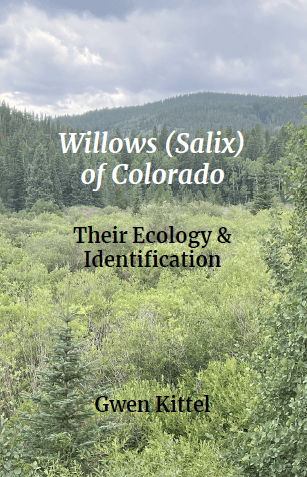 Gwen Kittel, GB, Boulder, Colorado, wrote “Willows (Salix) of Colorado: Their Ecology & Identification.”This work covers all aspects of Colorado willows and how to identify them in any season. This includes discussion of willow ecology and where to find them in the landscape.
Gwen Kittel, GB, Boulder, Colorado, wrote “Willows (Salix) of Colorado: Their Ecology & Identification.”This work covers all aspects of Colorado willows and how to identify them in any season. This includes discussion of willow ecology and where to find them in the landscape.
Colorado has a high diversity of willows (in the genus Salix) occurring from the alpine to the plains. This book describes 40 taxa that occur in Colorado, covering native & non-native species, with color photographs of each, along with dichotomous keys to vegetative, floristic, and dormant material. The aim of this work is to enable students, restoration ecologists, researches, and amateur and professional botanists to successfully identify willows.
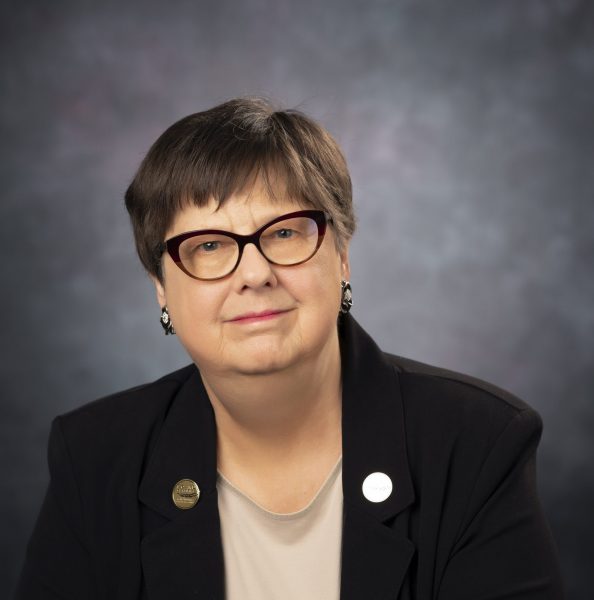
Sue Johnson, BZ, Fort Wayne, Indiana, wrote “The Guardian: A Teen’s Journey to Excellence.”What would it be like to have a guardian guiding you through some of your most traumatic experiences? George Gray, a recent transplant, finds himself in such a situation. Beginning a new school year in a new town three thousand miles away from the home he has always known is daunting. When he has difficulty fitting in, it becomes unbearable. Add to that the ultimate battle of bullying, which he receives in full measure by the school’s resident bully, it feels totally hopeless. When a gift of a magical book, Dreams Made Reality: A Journey of Tough Love, is given to George, his world turns unexpectedly into a life of surprising challenges, ones that George must complete. The author is the Guardian, who directs George to choose five goals to accomplish with the Guardian’s guidance. Sometimes moments spent with this mythical book are tough love, and other times they are served with compassion and gentleness. It all depends on George’s choices made, knowing consequences will come one way or another. Through it all, George grows into a fine young man and discovers a future that is promising. Come join his adventures, and learn along with him how to address possible problems that you may be experiencing as well. The Guardian knows all things, so maybe we all should listen. As he is used to saying often, “The Guardian has spoken.”
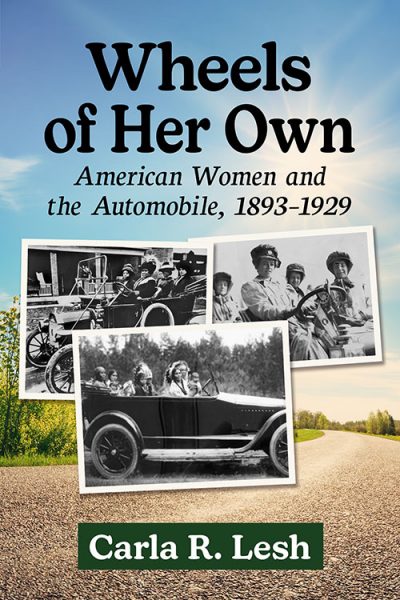 Carla R. Lesh, BQ-CD, Kingston, New York, wrote “Wheels of Her Own: American Women and the Automobile, 1893-1929.” Women used automobiles as soon as they had access to them. Black, Indigenous, and White American women utilized the automobile to improve their quality of life and achieve greater freedom. These women shared unique concerns and common aims as they negotiated their way through a time when advocacy for social change was undergoing a resurgence. The years that brought the automobile to the United States, 1893-1929, also brought increased legal and social restrictions based on racism and gender stereotypes. For women the automobile was a useful tool as they worked to improve their quality of life. The automobile provided a means for Black, Indigenous, and White women to pull away from limitations and work toward greater freedom. Exploring these key issues and more, this book is a history and social exploration of women and the automobile during the early automotive era.
Carla R. Lesh, BQ-CD, Kingston, New York, wrote “Wheels of Her Own: American Women and the Automobile, 1893-1929.” Women used automobiles as soon as they had access to them. Black, Indigenous, and White American women utilized the automobile to improve their quality of life and achieve greater freedom. These women shared unique concerns and common aims as they negotiated their way through a time when advocacy for social change was undergoing a resurgence. The years that brought the automobile to the United States, 1893-1929, also brought increased legal and social restrictions based on racism and gender stereotypes. For women the automobile was a useful tool as they worked to improve their quality of life. The automobile provided a means for Black, Indigenous, and White women to pull away from limitations and work toward greater freedom. Exploring these key issues and more, this book is a history and social exploration of women and the automobile during the early automotive era.
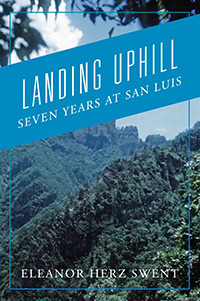 Eleanor Herz Swent, IC, Oakland, California, wrote “Landing Uphill: Seven Years at San Luis.” In 1947, Eleanor arrives at the San Luis mine in Mexico, where her husband, Langan Swent, is remembered as “el niño Americano” (the American boy).His father came in 1915, the first foreigner to bring his wife; they traveled by mule from Mazatlan to Tayoltita. Eleanor arrives by plane, landing uphill in the narrow canyon. The Hearst Company of San Francisco bought the mine from descendants of Don Jose Antonio Delaveaga, Spanish Minister of Metallurgy, who came to America in the 1700s. His descendants founded San Francisco, Orinda-Moraga, and Santa Cruz in Alta California before it was acquired by the United States. Welcomed by the Mexicans, Eleanor is both insider and newcomer. She has B.A. and M.A. degrees but has never ridden a mule, seen a cockroach, or cooked on a wood stove. She visits remote ranches where the priest comes periodically to perform marriages and baptisms. She earns the confidence of women and teaches family planning. After seven years, with three children, she and Langan leave the Mexico they love and return to the United States with mixed feelings.
Eleanor Herz Swent, IC, Oakland, California, wrote “Landing Uphill: Seven Years at San Luis.” In 1947, Eleanor arrives at the San Luis mine in Mexico, where her husband, Langan Swent, is remembered as “el niño Americano” (the American boy).His father came in 1915, the first foreigner to bring his wife; they traveled by mule from Mazatlan to Tayoltita. Eleanor arrives by plane, landing uphill in the narrow canyon. The Hearst Company of San Francisco bought the mine from descendants of Don Jose Antonio Delaveaga, Spanish Minister of Metallurgy, who came to America in the 1700s. His descendants founded San Francisco, Orinda-Moraga, and Santa Cruz in Alta California before it was acquired by the United States. Welcomed by the Mexicans, Eleanor is both insider and newcomer. She has B.A. and M.A. degrees but has never ridden a mule, seen a cockroach, or cooked on a wood stove. She visits remote ranches where the priest comes periodically to perform marriages and baptisms. She earns the confidence of women and teaches family planning. After seven years, with three children, she and Langan leave the Mexico they love and return to the United States with mixed feelings.
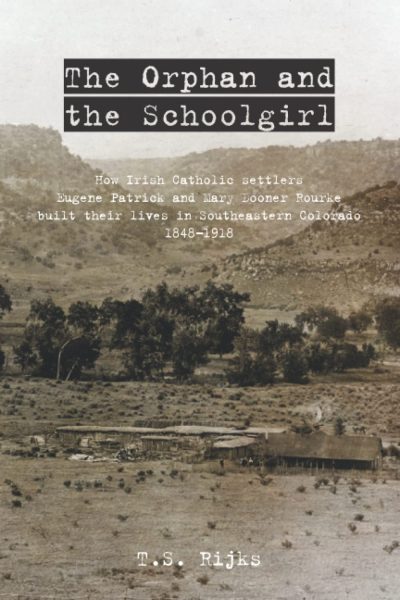 Teresa Rijks, JP, Colorado, wrote “The Orphan and the Schoolgirl: How Irish Catholic settlers Eugene Patrick and Mary Dooner Rourke built their lives in Southeastern Colorado 1848-1918.” Born in Ireland during the potato famine Eugene Rourke immigrated with his family to La Salle, Illinois, in 1852, where he met Mary Dooner, a schoolgirl. His parents died a couple of years later leaving him an orphan. As Eugene Rourke grew older, the call of the West with promises of great riches in the gold and silver mines was throbbing in his breast . . . It did not take Eugene long to realize this was not the life for him, especially since the quest for gold seemed like chasing the pot at the end of the rainbow. In December of 1869 he left Denver with only a general idea of where he was going, started south and as far as possible follow the rivers . . . Eugene had left a sweetheart behind so was hard pressed to get the ranch started, a house built, buy as many cows as he could afford, return to Illinois, marry the school teacher he loved, and bring his bride to the home he planned for her.
Teresa Rijks, JP, Colorado, wrote “The Orphan and the Schoolgirl: How Irish Catholic settlers Eugene Patrick and Mary Dooner Rourke built their lives in Southeastern Colorado 1848-1918.” Born in Ireland during the potato famine Eugene Rourke immigrated with his family to La Salle, Illinois, in 1852, where he met Mary Dooner, a schoolgirl. His parents died a couple of years later leaving him an orphan. As Eugene Rourke grew older, the call of the West with promises of great riches in the gold and silver mines was throbbing in his breast . . . It did not take Eugene long to realize this was not the life for him, especially since the quest for gold seemed like chasing the pot at the end of the rainbow. In December of 1869 he left Denver with only a general idea of where he was going, started south and as far as possible follow the rivers . . . Eugene had left a sweetheart behind so was hard pressed to get the ranch started, a house built, buy as many cows as he could afford, return to Illinois, marry the school teacher he loved, and bring his bride to the home he planned for her.
Eugene and Mary had ten children, seven reached adulthood. The family built a home in La Junta, Colorado, in the 1890’s. Here they contributed to the community, help found Colorado Savings and Trust Company and the La Junta Theater Company. The Rourke Theatre was named in honor of Eugene, the largest stockholder in the La Junta Theater Company in 1914. Newspaper articles follow the family’s activities and contributions to life in Southeastern Colorado.
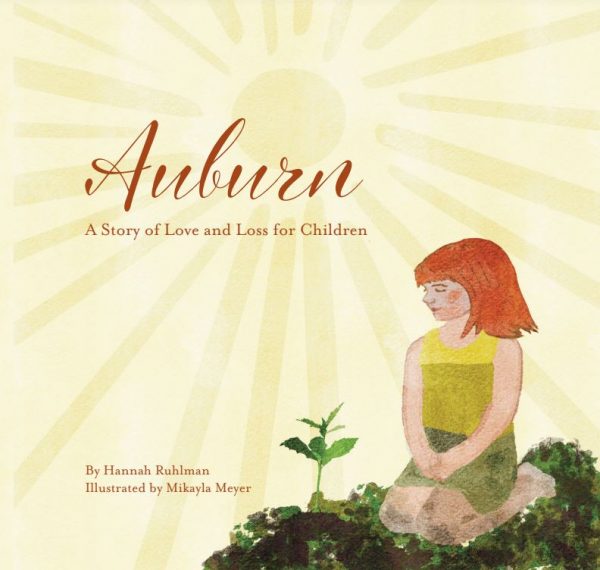 Hannah Ruhlman, CA, Brookings, South Dakota, wrote and Mikayla Meyer, CQ, Sioux Fall, South Dakot illustrated “Auburn: A Story of Love and Loss for Children.” It begins with the simple act of planting a seed, but it turns into a lifelong friendship between one little girl and her oak tree. Seasons come and go and the pair spend many days together, until the girl has aged into an old woman and it’s time for her to say goodbye. What will the tree do without its friend? How will it possibly go on without her? Children can discover how the ones we love are still with us even after they’re gone.
Hannah Ruhlman, CA, Brookings, South Dakota, wrote and Mikayla Meyer, CQ, Sioux Fall, South Dakot illustrated “Auburn: A Story of Love and Loss for Children.” It begins with the simple act of planting a seed, but it turns into a lifelong friendship between one little girl and her oak tree. Seasons come and go and the pair spend many days together, until the girl has aged into an old woman and it’s time for her to say goodbye. What will the tree do without its friend? How will it possibly go on without her? Children can discover how the ones we love are still with us even after they’re gone.
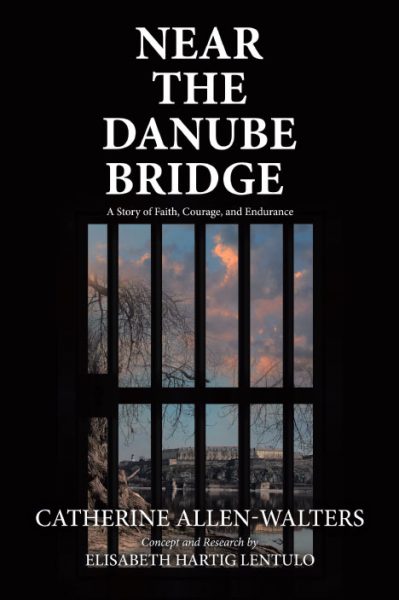 Elisabeth Hartig Lentulo, B, Escondido, California, wrote “Near the Danube Bridge: A Story of Faith, Courage and Endurance.” Catherine Allen-Walters, deeply engrossed in the exploration of diverse global religions and cultures, readily accepted Elisabeth Hartig Lentulo’s request to chronicle the authentic account of Lentulo’s father. This enthusiastic agreement marks her debut in the publishing world with the unveiling of “Near the Danube Bridge: A Story of Faith, Courage, and Endurance” (published by Archway Publishing) Kalman Hartig (1930-2021), born into affluence in the former Kingdom of Yugoslavia, was immersed in the realms of music, art, and literature from a tender age. Embracing the American Seventh-day Adventist movement during the upheavals of war-torn Europe, he grappled with the challenges of upholding his religious convictions in communist Yugoslavia, enduring a two-year hard labor sentence as a conscientious objector. Drawing solace from Bible stories and classical music, he preserved both his sanity and life. Surviving the harsh conditions of the labor camps, Hartig believed he had demonstrated his faith to God, unaware of the new challenges awaiting him. His wife, Hermina (Minka) Kirchner, with her own childhood traumas from wartime horrors, joined Hartig and their children in escaping the communist regime, seeking a better life in the United States. Together, they faced struggles, embraced love, and embarked on a journey of healing.
Elisabeth Hartig Lentulo, B, Escondido, California, wrote “Near the Danube Bridge: A Story of Faith, Courage and Endurance.” Catherine Allen-Walters, deeply engrossed in the exploration of diverse global religions and cultures, readily accepted Elisabeth Hartig Lentulo’s request to chronicle the authentic account of Lentulo’s father. This enthusiastic agreement marks her debut in the publishing world with the unveiling of “Near the Danube Bridge: A Story of Faith, Courage, and Endurance” (published by Archway Publishing) Kalman Hartig (1930-2021), born into affluence in the former Kingdom of Yugoslavia, was immersed in the realms of music, art, and literature from a tender age. Embracing the American Seventh-day Adventist movement during the upheavals of war-torn Europe, he grappled with the challenges of upholding his religious convictions in communist Yugoslavia, enduring a two-year hard labor sentence as a conscientious objector. Drawing solace from Bible stories and classical music, he preserved both his sanity and life. Surviving the harsh conditions of the labor camps, Hartig believed he had demonstrated his faith to God, unaware of the new challenges awaiting him. His wife, Hermina (Minka) Kirchner, with her own childhood traumas from wartime horrors, joined Hartig and their children in escaping the communist regime, seeking a better life in the United States. Together, they faced struggles, embraced love, and embarked on a journey of healing.
The book has received many prestigious awards, including BEST BIOGRAPHY from the INTERNATIONAL IMPACT BOOK AWARDS, BEST BOOK for CHRISTIAN NON-FICTION from PENCRAFT BOOK AWARDS, BRONZE WINNER in the BIOGRAPHICAL-HISTORICAL category from GLOBAL BOOK AWARDS and 2nd PLACE in BIOGRAPHY/HISTORY from FIREBIRD BOOK AWARDS.
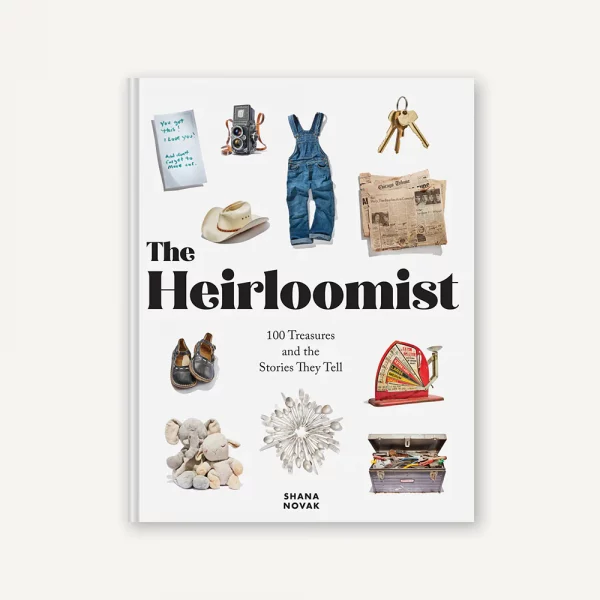 Shana Novak, BS, Omaha, Nebraska, wrote “The Heirloomist: 100 Treasures and the Stories They Tell.” The book is a photography collection of heirlooms and keepsakes, paired with the inspiring stories the objects symbolize. Christy Turlington, Gabby Giffords and Tory Burch are featured celebrities, among others.
Shana Novak, BS, Omaha, Nebraska, wrote “The Heirloomist: 100 Treasures and the Stories They Tell.” The book is a photography collection of heirlooms and keepsakes, paired with the inspiring stories the objects symbolize. Christy Turlington, Gabby Giffords and Tory Burch are featured celebrities, among others.
Other notable P.E.O.s featured in the book are Gretchen Evans, Retired US Army Command Sergeant Major, Shana’s grandmother, who founded a chapter in Alliance, Nebraska, and her mother, an active P.E.O in Omaha, Nebraska.

Version 1.0.0
Michele Rankin, DT, Marion, Ohio, wrote “Lake Effect.” A tragic accident. A mother undone by grief. A friendship shattered. White Dog Winery on the shores of lake Erie is home to Parker, her husband, Wade, and their children–18-year-old Isaac and 10-year-old Tess. Their lives are busy and full with a successful business and one child on his way to college in the fall. Even better, Valerie, Isaac’s steady girlfriend, is the daughter of hteir best friends, Mark and Nikki Wallace. But life can change in an instant.
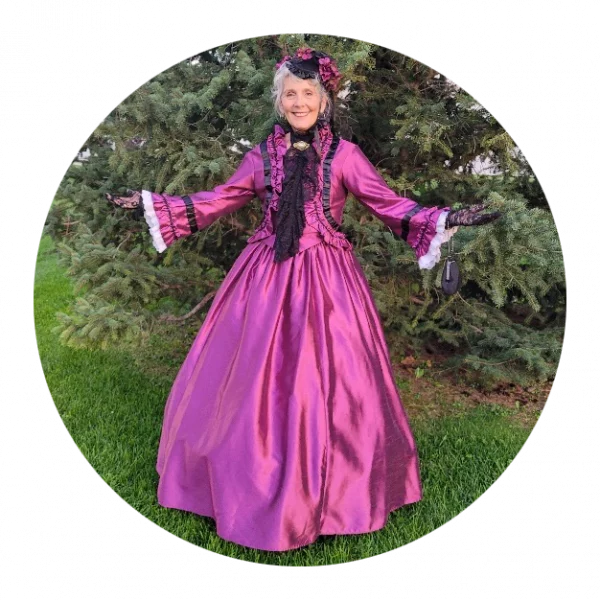 Lisa Ross, EP, Denver, Colorado, wrote “An Imperfect Woman.” The first two chapters of this novel are a fictional narrative of the protagonist’s experiences at Cottey College. The story opens with the protagonist interviewing with the president of Cottey College for a coveted scholarship.
Lisa Ross, EP, Denver, Colorado, wrote “An Imperfect Woman.” The first two chapters of this novel are a fictional narrative of the protagonist’s experiences at Cottey College. The story opens with the protagonist interviewing with the president of Cottey College for a coveted scholarship.
Several years ago, LIsa was fortunate to spend a couple days with librarians at Cottey for her research. They provided a trove of historical background and insights for which she is deeply grateful. As an author of historical fiction, her exploration in the stacks and files was a delightful project.
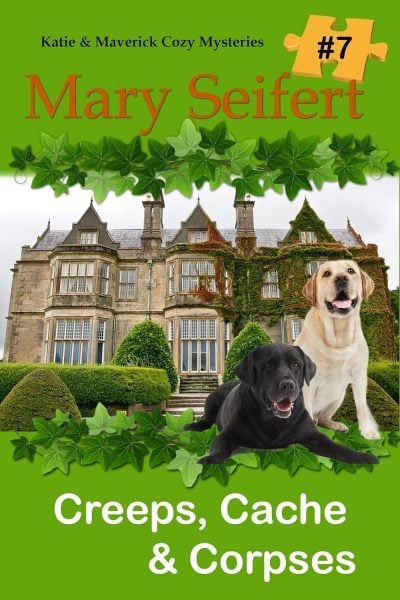
Mary Seifer, BI-EN, Willmar, Minnesota, wrote “Creeps, Cache & Corpses.”When Katie’s spring break plans for a romantic getaway with Pete fall apart, she skips a chance to go skiing with her dad and the sister she’s very recently met, and finds herself and Maverick in the company of friends and her students at The White Star Inn in New Prague, Minnesota. Although they are traveling to attend the memorial service for a student’s mother, there will also be salon treatments, shopping, and sightseeing. But, from the moment they arrive, tension fills the air, as Edith Farthington, the oddball innkeeper, and her nephew appear to be harboring secrets and a few unwanted visitors.The group is in town less than 24 hours when, during a geocaching outing, Katie and her students discover a dead body concealed in a remote area of a state park. Unfortunately, the victim just happens to be one of the few people in town they’ve already met, and Katie’s group is getting the side-eye from the local cops.The suspects are numerous, the motives tricky, but there’s a shock for Katie and those close to her when the sheriff leaps ahead to arrest one of their own. How can Katie find enough evidence to convince him otherwise, especially when she’s been warned to butt out—many times?
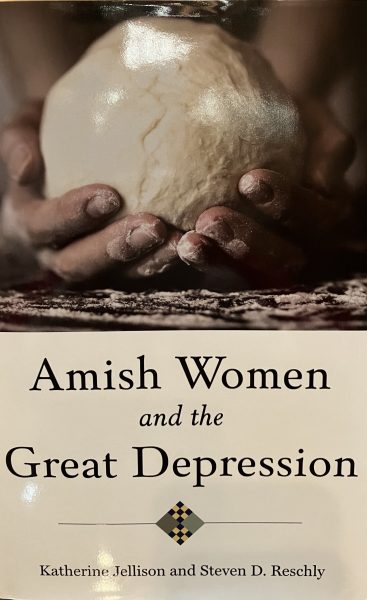 Katherine Jellison, G, Athens, Ohio, co-wrote Amish Women and the Great Depression. Katherine Jellison, G, Athens, Ohio, co-wrote Amish Women and the Great Depression. From the John Hopkins University Press description of the book: ” At the end of the Great Depression, the US Bureau of Agricultural Economics (BAE) designated the Old Order Amish of Lancaster County, Pennsylvania, the most economically and culturally stable agricultural community in the nation. In Amish Women and the Great Depression, Katherine Jellison and Steven D. Reschly examine the integral role that Amish women played in this Depression-era success story.”
Katherine Jellison, G, Athens, Ohio, co-wrote Amish Women and the Great Depression. Katherine Jellison, G, Athens, Ohio, co-wrote Amish Women and the Great Depression. From the John Hopkins University Press description of the book: ” At the end of the Great Depression, the US Bureau of Agricultural Economics (BAE) designated the Old Order Amish of Lancaster County, Pennsylvania, the most economically and culturally stable agricultural community in the nation. In Amish Women and the Great Depression, Katherine Jellison and Steven D. Reschly examine the integral role that Amish women played in this Depression-era success story.”
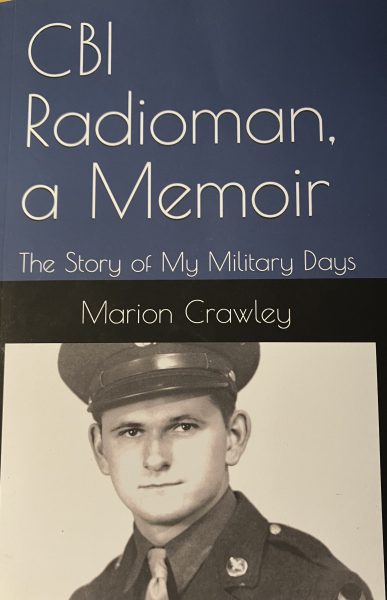 Daisy Franz, G, Athens, Ohio, edited CBI Radioman, a Memoir: the Story of My Military Days.
Daisy Franz, G, Athens, Ohio, edited CBI Radioman, a Memoir: the Story of My Military Days.
While preparing her parents’ home for sale, Daisy discovered her father, Marion Crawley, had written a memoir of his three years as a soldier in the Army Air Force during World War II. Finding it to be a page-turner, she is sharing his story for all to read.
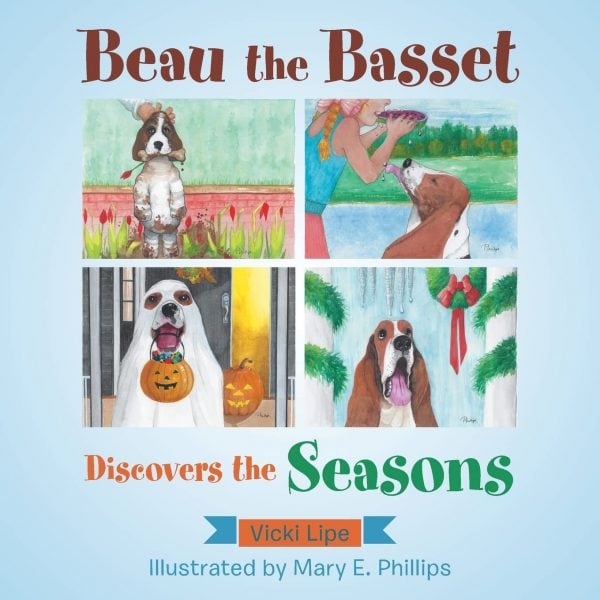 Vicki Lipe, MG, Galesburg, Illinois, wrote and Mary Phillips, MG, Galesburg, Illinois, illustrated “Beau the Basset Discovers the Seasons.” This book introduces children to Beau the Basset, a playful puppy who is investigating the world around him. Join him as he discovers the wonders of the four seasons!
Vicki Lipe, MG, Galesburg, Illinois, wrote and Mary Phillips, MG, Galesburg, Illinois, illustrated “Beau the Basset Discovers the Seasons.” This book introduces children to Beau the Basset, a playful puppy who is investigating the world around him. Join him as he discovers the wonders of the four seasons!
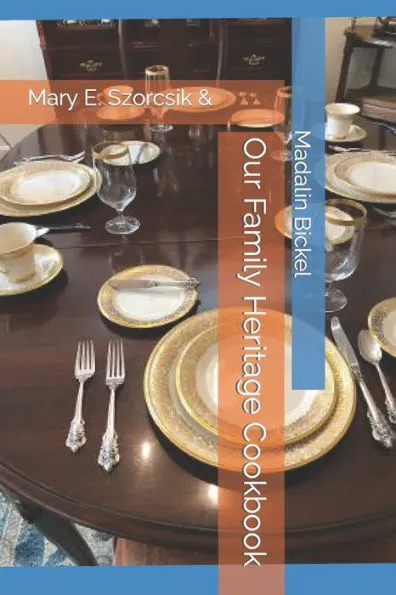 Madalin E Bickel, GR, Tallahassee, Florida and Mary E Szorcsik, Gr, Tallahassee, Florida, wrote “Our Family Heritage Cookbook.” Families often build memories through food. Madalin and Kekee, sisters, have compiled over 150 family recipes and hints that began in the 1940’s and continued up to 2022. Many of the recipes include family memories and anecdotes. From hand-cranked home-made ice cream to Rock Cornish game hens, the recipes will delight readers of all ages. The authors were motivated to compile the collection after discussing recipes (some missing) that their mother had made. They reminisced about their grandmother’s contributions on holidays and family cookouts. Research and discussions with other family members helped create what the authors hope will be a memorial to their ancestors and a lasting gift to their children, grandchildren, and maybe even some great-grandchildren.
Madalin E Bickel, GR, Tallahassee, Florida and Mary E Szorcsik, Gr, Tallahassee, Florida, wrote “Our Family Heritage Cookbook.” Families often build memories through food. Madalin and Kekee, sisters, have compiled over 150 family recipes and hints that began in the 1940’s and continued up to 2022. Many of the recipes include family memories and anecdotes. From hand-cranked home-made ice cream to Rock Cornish game hens, the recipes will delight readers of all ages. The authors were motivated to compile the collection after discussing recipes (some missing) that their mother had made. They reminisced about their grandmother’s contributions on holidays and family cookouts. Research and discussions with other family members helped create what the authors hope will be a memorial to their ancestors and a lasting gift to their children, grandchildren, and maybe even some great-grandchildren.
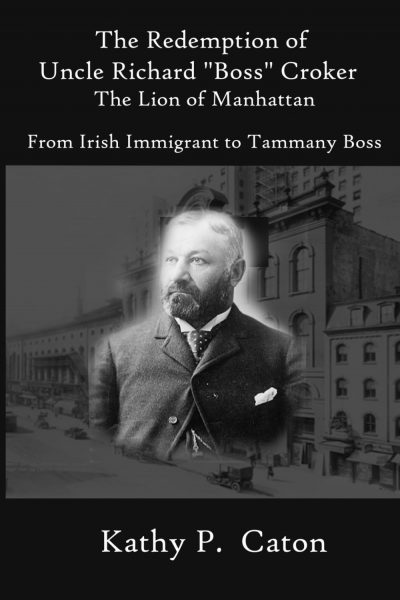 Kathy Caton, AC, Manchester, Connecticut, wrote “The Redemption of Uncle Richard, “Boss” Croker The Lion of Manhattan: From Irish immigrant to Tammany Boss,” an overview of Kathy’’s family lineage that focuses on the history of this intriguing and colorful individual.
Kathy Caton, AC, Manchester, Connecticut, wrote “The Redemption of Uncle Richard, “Boss” Croker The Lion of Manhattan: From Irish immigrant to Tammany Boss,” an overview of Kathy’’s family lineage that focuses on the history of this intriguing and colorful individual.
After decades of working on her family genealogy, Kathy discovered Richard Croker, Tammany Boss, was indeed her great, great, grand uncle, immigrating to the United States from Ireland. She found during her extensive research, many redemptive qualities in this so-called “crime boss”, as she found many of the historical summaries depict him for his negative influence and corruption of New York politics. However, this book investigates and illustrates his character in depth, and ultimately finds him to have some significant endearing attributes while it dives head on into his personal life and his political career.
This biography begins in Ireland, way before Richard and his parents immigrated to the United States and continues throughout his tragedies and triumphs both and out of the spotlight.
Kathy was fascinated to learn about the evolution of our political structure here in the United States and how that structure, in many respects, has modeled the past as well as changed very little from the designs of these formative Tammany bosses, one of which is this Uncle, Boss Richard Croker, The Lion of Manhattan.
Article Info
Topic
Membership
Article Type
Bonus Web Content
Related Articles
P.E.O. Authors
To be included on the Authors page, your book must have been published within the…
Centennial Chapters
Chapter Q, Marinette, Wisconsin Organized: April 22, 1925 Celebrated: April 7, 2025 First row, from…
Centennial Chapters
Chapter AC, Groton, South Dakota Organized: December 1, 1924 Celebrated: December 9, 2024 First row,…



